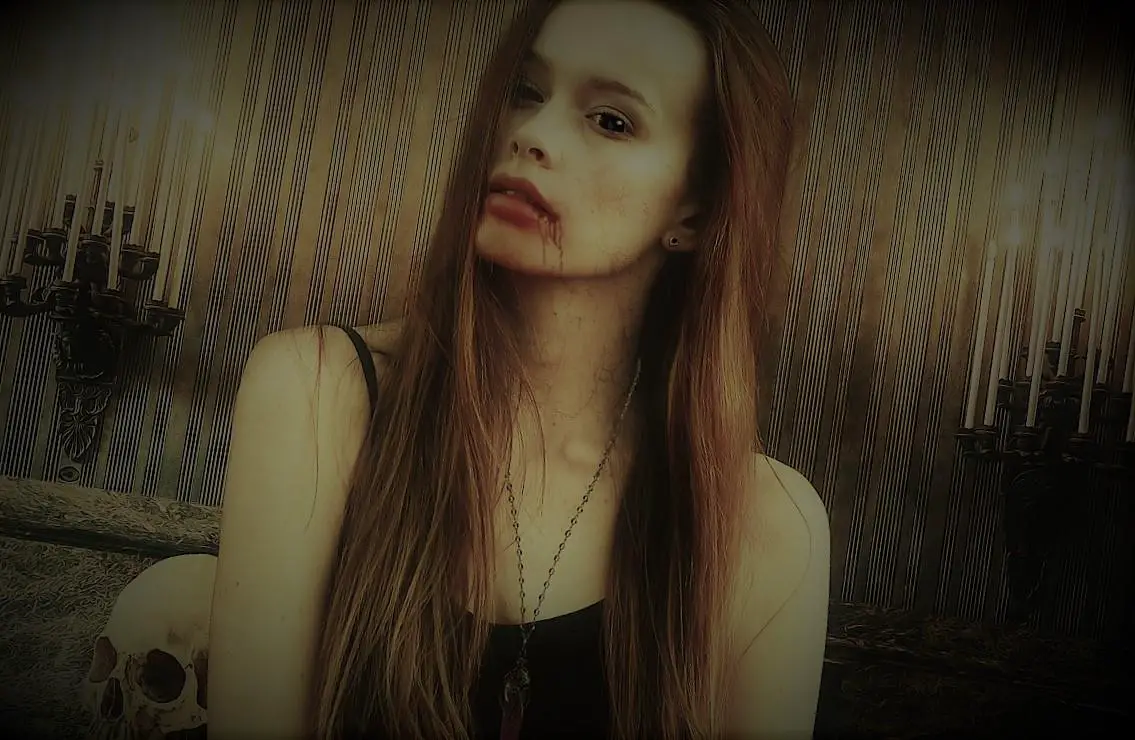Share the Lore!
By: Skylar Black
Is It Possible To Be A Vampire?
Vampirism has fascinated literature and science alike for decades – the possibility of achieving immortality by consuming human blood is attractive for some, while others are repulsed by the very idea.
In any case, many have been interested in how you become one of these creatures of the night. We don’t recommend trying any of these at home – results may vary.

The Vampire Affliction
The most common method of becoming a vampire is to be bitten – or “turned” – by another vampire. This stems from ancient Eastern European folklore that regards vampirism as a disease of the blood that can be passed between hosts much like other bloodborne pathogens.
In other sources, such as Bram Stoker’s Dracula, becoming a vampire via blood transfer is a bit more complex.
Getting bitten by a vampire doesn’t cut it – you must let them drink from you, and then drink their blood in return. This follows with Stoker’s communion allegory.
In any case, a vampire must choose who they turn, rather than afflicting everyone they feed upon with the curse of vampirism.
Born Vampires
Not all vampires are turned – according to some European folklore, babies who are born with teeth or born during the period between Christmas and Epiphany (December 25 – January 6) are vampires or predisposed to becoming one.
In yet other tales, babies whose mothers did not consume enough salt during pregnancy have a chance of being born vampires. It’s assumed that this is because salt is used in esoteric practices to cleanse or banish negative energies, so a lack of salt could allow vampiric energies to reach a fetus.
In some more modern interpretations, the biological children of vampires are vampires at birth, inheriting the affliction from their vampiric parent.
Whether this is guaranteed or left up to genetic chance depends on the source. Some tales state that pregnant women who fell under the hypnotic spell of a vampire before giving birth will give birth to a vampire spawn – older vampire legends assume that vampires cannot reproduce naturally, so this may have been a way to produce a “legitimate” heir.
Vampires as Undead Beings
Yet another way to create a vampire is to raise a human corpse from the dead. This is usually achieved by some form of sorcery, though the exact methods or rituals that one would use to raise a vampire are unclear in the context of folklore.
At any rate, you would need to perform these rites on a relatively fresh corpse, and then provide your weak new vampire spawn with a place to hide from the sunlight and feed in safety before they’re ready to face the world.
An old wive’s tale states that if a cat jumps over a person’s corpse, their corpse will rise as a vampire. The specifics are murky – whether the cat must step over someone as they’re in their coffin or if it applies to a corpse that has already been interred.
In any case, there are probably better ways to create vampires.
The Real-Life Inspirations of Vampirism
Vampires have existed in legend since the time of ancient Greece, but most scholars agree that the condition isn’t real. The symptoms, however, are based on a variety of real diseases.
20th and 21st-century folklorists believe that the characteristics that would eventually identify someone as a creature of the night are taken from diseases that were rampant during days past.
One of the most prominent symptoms – the need to bite other humans and pass on your affliction – is believed to have been derived from the symptoms of late-stage rabies.

Rabies is also believed to be the source of a vampire’s fear of sunlight, though it’s also possibly derived from a symptom of porphyria (a group of disorders caused by a buildup of porphyrins in your bloodstream), which causes sunlight sensitivity.
The general aesthetics of being a vampire – pale skin, a thin frame, and blood dripping from the side of the mouth – can be traced back to victims of tuberculosis, which was endemic in the United States before the invention of penicillin in 1928.
Perhaps even more influential than the diseases of the time was the phenomenon of premature burials.
Because of the lack of understanding of medicine in days past, it wasn’t uncommon for people who were comatose, very ill, or even just extremely drunk to be mistaken to be dead. This led to bodies “miraculously” recovering or coming back to life, though not everyone woke up in time to prevent being buried.
Some of these people, especially in Europe, were believed to be the living dead, and traditions such as staking corpses before burial or burying people facedown to prevent them from escaping their graves just added to the myth.
Could Any of These Methods Work?
In a word: No.
Becoming a vampire by necromantic or esoteric means doesn’t seem to have worked for any practitioners in a provable manner. It seems that unless you come across a real creature of the night, you might have to settle with being human for the time being.
But you never know what could come out of the darkness on a moonless night…
References:
Articles Encyclopedia Brittanica - Vampire National Institute of Diabetes and Digestive and Kidney Diseases - Porphyria Centers for Disease Control and Prevention - Tuberculosis (TB) Books Rabid: A Cultural History of the World’s Most Diabolical Virus by Bill Wasik and Monica Murphy Buried Alive: The Terrifying History of Our Most Primal Fear by Jan Bondeson Vampire 101: The Complete Guide to Becoming a Vampire by Darnell Jefferson Becoming Vampire: Difference and the Vampire in Popular Culture by Simon Bacon Podcasts Last Podcast on the Left - Episode 76: Real-Life Vampires Morbid - Episode 253: Buried Alive

